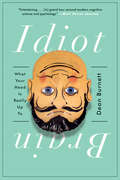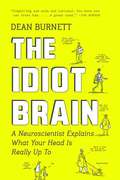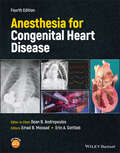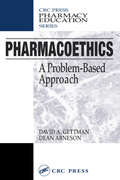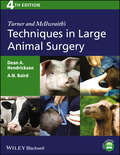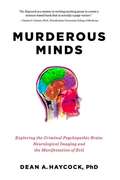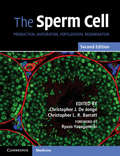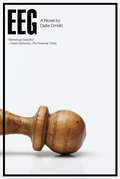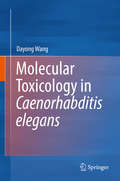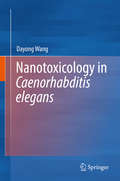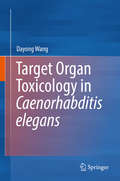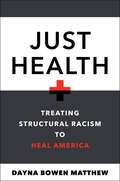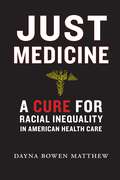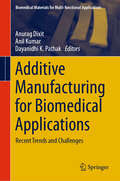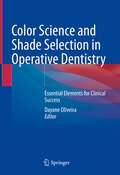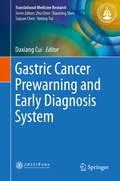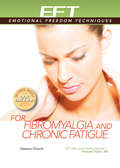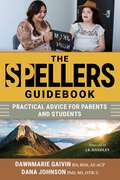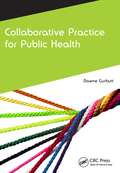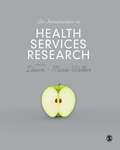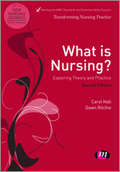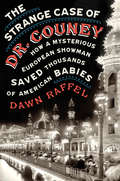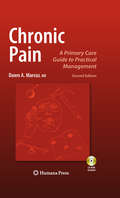- Table View
- List View
Idiot Brain: What Your Head Is Really Up To
by Dean BurnettA neuroscientist's delightful tour of our mysterious, mischievous, entirely fallible gray matter. It's happened to all of us at some point. You walk into the kitchen, or flip open your laptop, or stride confidently up to a lectern, filled with purpose—and suddenly haven't the foggiest idea what you’re doing. Welcome to your idiot brain. Yes, it is an absolute marvel in some respects—the seat of our consciousness, the pinnacle (so far) of evolutionary progress, and the engine of all human experience—but your brain is also messy, fallible, and about 50,000 years out-of-date. We cling to superstitions, remember faces but not names, miss things sitting right in front of us, and lie awake at night while our brains replay our greatest fears on an endless loop. Yet all of this, believe it or not, is the sign of a well-meaning brain doing its best to keep you alive and healthy. In Idiot Brain, neuroscientist Dean Burnett celebrates blind spots, blackouts, insomnia, and all the other downright laughable things our minds do to us, while also exposing the many mistakes we've made in our quest to understand how our brains actually work. Expertly researched and entertainingly written, this book is for everyone who has wondered why their brain appears to be sabotaging their life, and what on earth it is really up to.
The Idiot Brain: A Neuroscientist Explains What Your Head Is Really Up To
by Dean BurnettThe brain may be the seat of consciousness and the engine of all human experience, but it’s also messy, fallible and disorganized. It’s undeniably impressive, but it’s far from perfect, and these imperfections influence everything that humans say, do and experience. In The Idiot Brain, Dean Burnett celebrates the downright laughable things our minds do to us, as well as exposing the fact that people are often way off in their thinking about how the brain works. For example, did you know thatyour memory is egotistical?stress can actually increase your performance at a task?conspiracy theories and superstitions stem from your brain’s insistence that the world isn’t random?the brain’s limitations mean you really can miss something that’s right under your nose?the way the brain’s processing works means that time really does fly if you’re having fun?alcohol can sometimes improve your memory?Dean Burnett’s unpredictable and entertaining first book explores the unexpected side of everyday life, highlighting where conventional thinking is wrong and how our brains trip us up at every turn. This is lucid, funny and smart: in short, the best kind of popular science.
Anesthesia for Congenital Heart Disease
by Dean B. AndropoulosAnesthesia forCongenital Heart Disease An Extensive Reference Work Detailing the Procedures, Knowledge, and Approaches in Anesthesia for Congenital Heart Disease In this fourth edition of Anesthesia for Congenital Heart Disease, a distinguished group of expert authors in congenital heart disease (CHD) from all over the world provide a thorough, comprehensive, and fully updated overview of the specifics of congenital heart disease and the intricacies involved with administering anesthetic care to patients who suffer from the myriad of lesions encompassed by CHD. In the seven years since the third edition of Anesthesia for Congenital Heart Disease was published, an explosion of new procedures, approaches, and patients eligible for anesthetic care has occurred. The goal of Anesthesia for Congenital Heart Disease, Fourth Edition is to help readers understand all of the recent advancements and developments in the field while also imparting a foundation of essential historical knowledge. The book contains new chapters that reflect exciting new approaches in this rapidly changing field, and also includes: Updated information in the chapter Adult Congenital Heart Disease and Mechanical Support of the Circulation, reflecting the increasing prominence of these patients in CHD care New chapters on Informatics and Artificial Intelligence, Genetic Syndromes, Point of Care Ultrasound, and Cardiopulmonary Resuscitation in Congenital Heart Disease Thorough updates of all chapters with many new figures and tables, and hundreds of new recent references provide up to date information Anesthesia for Congenital Heart Disease, Fourth Edition serves as a thorough and in-depth reference work and is an essential resource for practitioners providing perioperative care to CHD patients.
Pharmacoethics: A Problem-Based Approach (Pharmacy Education Ser. #Vol. 16)
by David A. Gettman Dean ArnesonDue to the changing nature of the practice of pharmacy, today's pharmacists, pharmaceutical scientists, and researchers are faced with an increasing amount of ethical dilemmas. Pharmacoethics: A Problem Based Approach not only introduces the current ethical issues, it also provides decision making tools that can be applied to any ethical issue that
Turner and McIlwraith's Techniques in Large Animal Surgery
by Dean A. Hendrickson A. N. BairdTurner and McIlwraith's Techniques in Large Animal Surgery, Fourth Edition is an updated version of the classic resource for step-by-step instruction on basic surgical techniques in cattle, horses, swine, goats, and llamas. With detailed line drawings to demonstrate the principles discussed, the book addresses general aspects of surgery such as anesthesia and equipment and provides descriptions of surgical conditions and techniques commonly encountered in large animal practice. Now including a website with interactive review questions and the figures from the book in PowerPoint, the Fourth Edition is a highly practical, reliable guide for veterinary students and veterinary practitioners with a large animal caseload.The Fourth Edition includes eight new techniques and completely rewritten chapters on anesthesia, equine wound management, and surgical techniques in bovine and swine patients, as well as revisions to reflect advances throughout the book and updated references. Turner and McIlwraith's Techniques in Large Animal Surgery continues to supply students and practitioners alike with a valuable resource on the fundamental techniques of farm animal surgery.
Murderous Minds: Neurological Imaging and the Manifestation of Evil
by Dean A. HaycockIs there a biological basis for evil? From neurological imaging to behavioral studies, Dean Haycock's account of the groundbreaking research reveals what scientists are learning about the psychopaths living among us. How many times have you seen a murder on the news or on a TV show like CSI: Crime Scene Investigation, and said to yourself, "How could someone do something like that?" Today, neuroscientists are imaging, mapping, testing and dissecting the source of the worst behavior imaginable in the brains of the people who lack a conscience: psychopaths. Neuroscientist Dean Haycock examines the behavior of real life psychopaths and discusses how their actions can be explained in scientific terms, from research that literally looks inside their brains to understanding how psychopaths, without empathy but very goal-oriented, think and act the way they do. Some don’t commit crimes at all, but rather make use of their skills in the boardroom. But what does this mean for lawyers, judges, psychiatrists, victims and readers--for anyone who has ever wondered how some people can be so bad. Could your nine-year-old be a psychopath? What about your co-worker? The ability to recognize psychopaths using the scientific method has vast implications for society, and yet is still loaded with consequences. 8 page color insert
The Sperm Cell
by Christopher J. De Jonge Barratt Christopher L. R.This revised and updated second edition provides a comprehensive account of the human male gamete. Detailed overviews of human sperm production, maturation, and function - and how these processes affect and influence fertility, infertility, and assisted reproduction - are given. A wide range of new developments including proteomics, spermatogenesis, sperm-specific WW domain-binding proteins, Ca2+ signalling, DNA packaging, epididymis are explored, whilst a new chapter presents information gained from mouse genetics, highlighting how it informs male fertility research. The impact of environmental factors during pre-pubertal and pubertal stages of life is also investigated. Featuring engaging prose with chapters organized topographically, The Sperm Cell remains an essential resource for andrologists, clinical scientists, and laboratory personnel.
EEG: A Novel
by Daša DrndicFinancial Times Book of the Year An urgent new novel about death, war, and memory from the highly acclaimed Croatian writer In this breathtaking final work, Daša Drndic’s fearless voice reaches new heights. Andreas Ban’s suicide attempt has failed. Though very ill, he still finds the will to tap on the glass of history to summon those imprisoned within. Mercilessly, he dissects society and his environment, shunning all favors as he goes after the evils and hidden secrets of our times. History remembers the names of the perpetrators, not the victims—Ban remembers and honors the lost. He travels from Rijeka to Zagreb, from Belgrade to Tirana, from Parisian avenues to Italian castles. Ghosts follow him wherever he goes: chess grandmasters who disappeared during WWII; the lost inhabitants of Latvia; war criminals who found work in the CIA and died peacefully in their beds. Ban’s family is with him too, those already dead and those with one foot in the grave. As if left with only a few pieces in a chess game, Andreas Ban—and Daša Drndic—play a stunning last match against Death. “Daša Drndic was incapable of writing a sentence that was not forceful, fierce or funny-or all three simultaneously.”—Amanda Hopkinson, The Guardian
Molecular Toxicology in Caenorhabditis elegans
by Dayong WangThis book will focus on the molecular basis of oxidative stress induced by toxicants or stresses and various molecular signalling pathways in regulating the toxicity of toxicants or stresses in Caenorhabditis elegans. It will also cover the discussion on the aspects of response signals, G-protein coupled receptors and ion channels, specific molecular signals, and epigenetic signals involved in the regulation of toxicity from toxicants or stresses. The molecular basis for adaptive response for transgenerational toxicity of environmental toxicants or stresses will be further discussed. Nematode Caenorhabditis elegans is a classic model animal with well-described genetic and developmental backgrounds based on the study of life science, and has been further successfully and widely used in both toxicity assessment and toxicological study of various environmental toxicants or stresses. Based on related available data, this book aims at providing a systematic understanding of the knowledge system of molecular toxicology in C. elegans.
Nanotoxicology in Caenorhabditis elegans
by Dayong WangThis book focuses on the toxicity of engineered nanomaterials (ENMs) and their underlying physicochemical, cellular, physiological, and molecular mechanisms. Further, it covers ENMs’ translocation and their targeted organ toxicology, and discusses chemical and pharmacological strategies used to combat nanotoxicity. Engineered nanomaterials (ENMs) are defined as materials with one or more dimensions of less than 100 nm, and have shown considerable promise in several areas of development. At the same time, the potential toxicity of ENMs for human health and environmental organisms is increasingly attracting attention. In addition to the typical properties of model animals, Caenorhabditis elegans is extremely sensitive to environmental toxicants, which makes it the ideal in vivo assay system for toxicological studies. C. elegans has been widely used in toxicity assessment and toxicological studies of environmental toxicants and stresses. This book provides a comprehensive summary of nanotoxicology research on C. elegans.
Target Organ Toxicology in Caenorhabditis elegans
by Dayong WangThis book introduces readers to intestinal and epidermal barriers, and to toxicity induction of environmental toxicants or stresses in the intestine, epidermis, neurons, muscle, and reproductive organs in Caenorhabditis elegans. In addition, it discusses the protective responses of various organs and nematodes’ avoidance behaviour with regard to environmental toxicants or stresses. The intestinal, epidermal, neuronal, and germline signalling pathways required for the regulation of toxicity of environmental toxicants or stresses are also introduced and discussed. As a classic model animal with well-described genetic and developmental backgrounds, the nematode Caenorhabditis elegans has been successfully and widely used in both toxicity assessments and toxicological studies on various environmental toxicants and stresses. Once exposure to certain environmental toxicants has occurred, the toxicants can enter into the primary targeted organs (such as intestinal cells), and even be translocated into secondary targeted organs (such as reproductive organs and neurons). Based on related available data, this book provides a systematic understanding of target organ toxicology in C. elegans.
Toxicology at Environmentally Relevant Concentrations in Caenorhabditis elegans
by Dayong Wang“This book uses Caenorhabditis elegans as model animal to introduce the toxicity induction of toxicants at environmentally relevant concentrations under different conditions. It also discusses the systematic introduction of different molecular signaling pathways, as well as G protein coupled receptors and ion channels, in regulating the toxicity of toxicants at environmentally relevant concentrations. The intestinal, neuronal, and germline molecular networks required for the regulation of toxicity of toxicants at environmentally relevant concentrations is further introduced and discussed. This book aims at providing a systematic understanding of the knowledge system on toxicology at environmentally relevant concentrations in Caenorhabditis elegans. ”
Just Health: Treating Structural Racism to Heal America
by Dayna Bowen MatthewChoice Outstanding Academic Title 2023The author of the bestselling Just Medicine reveals how racial inequality undermines public health and how we can change itWith the rise of the Movement for Black Lives and the feverish calls for Medicare for All, the public spotlight on racial inequality and access to healthcare has never been brighter. The rise of COVID-19 and its disproportionate effects on people of color has especially made clear how the color of one’s skin is directly related to the quality of care (or lack thereof) a person receives, and the disastrous health outcomes Americans suffer as a result of racism and an unjust healthcare system.Timely and accessible, Just Health examines how deep structural racism embedded in the fabric of American society leads to worse health outcomes and lower life expectancy for people of color. By presenting evidence of discrimination in housing, education, employment, and the criminal justice system, Dayna Bowen Matthew shows how racial inequality pervades American society and the multitude of ways that this undermines the health of minority populations. The author provides a clear path forward for overcoming these massive barriers to health and ensuring that everyone has an equal opportunity to be healthy. She encourages health providers to take a leading role in the fight to dismantle the structural inequities their patients face. A compelling and essential read, Just Health helps us to understand how racial inequality damages the health of our minority communities and explains what we can do to fight back.
Just Medicine: A Cure for Racial Inequality in American Health Care
by Dayna Bowen MatthewOffers an innovative plan to eliminate inequalities in American health care and save the lives they endanger Over 84,000 black and brown lives are needlessly lost each year due to health disparities: the unfair, unjust, and avoidable differences between the quality and quantity of health care provided to Americans who are members of racial and ethnic minorities and care provided to whites. Health disparities have remained stubbornly entrenched in the American health care system—and in Just Medicine Dayna Bowen Matthew finds that they principally arise from unconscious racial and ethnic biases held by physicians, institutional providers, and their patients.Implicit bias is the single most important determinant of health and health care disparities. Because we have missed this fact, the money we spend on training providers to become culturally competent, expanding wellness education programs and community health centers, and even expanding access to health insurance will have only a modest effect on reducing health disparities. We will continue to utterly fail in the effort to eradicate health disparities unless we enact strong, evidence-based legal remedies that accurately address implicit and unintentional forms of discrimination, to replace the weak, tepid, and largely irrelevant legal remedies currently available.Our continued failure to fashion an effective response that purges the effects of implicit bias from American health care, Matthew argues, is unjust and morally untenable. In this book, she unites medical, neuroscience, psychology, and sociology research on implicit bias and health disparities with her own expertise in civil rights and constitutional law. In a time when the health of the entire nation is at risk, it is essential to confront the issues keeping the health care system from providing equal treatment to all.
Additive Manufacturing for Biomedical Applications: Recent Trends and Challenges (Biomedical Materials for Multi-functional Applications)
by Anil Kumar Anurag Dixit Dayanidhi K. PathakNew fabrication techniques and biomaterials have advanced significantly as attention toward healthcare innovations in recent decades has increased. This book provides a comprehensive overview of the application of additive manufacturing for biomedical devices. The book focuses on the use of biomaterial for hard and soft tissue engineering. These materials can imitate the mechanical, structural, and biological characteristics of the parent tissue, repairing or replacing its functioning. It provides details on the use of various biomaterials for different biomedical applications. It highlights the present trends and potential of various techniques and materials for various applications. The chapters in this book written by eminent experts highlight recent developments in additive manufacturing for biological mimicking and surgical planning. It discusses latest advances in various 3D printing technologies in the fabrication of biomedical devices for orthopaedic and cardiovascular applications, along with rising trends in designing and creating tissue replacement substitute simulants. This book can serve as a fundamental textbook for research in additive manufacturing, fabrication of implants or scaffolds and medical device development, biomaterials, tissue engineering, and biomedical engineering. This book can be a valuable resource for mechanical and biomedical engineers, academicians, healthcare researchers, and professionals interested in tissue engineering.
Color Science and Shade Selection in Operative Dentistry: Essential Elements for Clinical Success
by Dayane OliveiraThis comprehensive guide to color science and shade selection in Dentistry presents all the theory and clinical guidance required in order to achieve consistent clinical success. The book opens by reviewing color and its dimensions and discussing color perception, drawing attention to the various phenomena that impact upon it. Shade selection in Operative Dentistry is then explained in detail with the aid of copious illustrations. The coverage encompasses shade selection methods for resin-based composite restorations and for bleaching procedures, with presentation of the latest evidence on their accuracy and reliability. Guidance is then provided on how to achieve predictable color harmony between the natural tooth and the composite restorative material in the context of biomimetic Dentistry, with discussion of special effects, pigments, layering techniques, surface texture, and finishing and polishing. Changes in color over time and responses to such changes are also outlined. The book will be of value for practitioners in Restorative and Esthetic Dentistry as well as for dental students and researchers.
Gastric Cancer Prewarning and Early Diagnosis System
by Daxiang CuiThe book explores recent developments in the application of nanotechnology in the early detection of gastric cancer. It discusses various aspects, such as screening for gastric cancer-associated biomarkers; establishing new ultrasensitive detection methods based on nanoparticle labeling and nanoeffects; developing a new generation of nanodevices for high-throughput examination of serum and breath biomarkers; developing multifunctional nanoprobes for targeted imaging and simultaneous therapy of gastric cancer; evaluating the biosafety of multifunctional nanoprobes; and the establishment of a pre-warning and early diagnosis system. It also presents clinical applications and prospects. The book provides a valuable reference for researchers in nanomedicine and clinicians involved in gastric cancer and radiology.
EFT for Fibromyalgia
by Dawson ChurchEFT is a breakthrough treatment for fibromyalgia, chronic fatigue, and similar conditions. This book is packed with heartbreaking stories by former sufferers, talking about the pain, despair, and limitation they lived through before finding EFT. After EFT, many report complete or partial remission, even though fibromyalgia and chronic fatigue are labeled "incurable" by the US National Institutes of Health and many medical professionals. This book will teach you the steps of the method they used. It's called "Clinical EFT" because it has been validated in dozens of clincal trials, including one showing that fibromyalgia sufferers experienced much less pain, anxiety and depression after learning EFT, with many recovering completely. The reason for EFTs remarkable results is that it reduces stress, especially stress associated with negative emotions such as anger, guilt, grief, shame and blame. This book will guide you into identifying the traumatic experiences that contribute to stress, and tapping away their emotional charge. Imagine: no drugs, surgery, or demanding treatment regimens; just the powerful medicine of emotional healing, stress reduction, and inner peace.
The Spellers Guidebook: Practical Advice for Parents and Students
by Dana Johnson Dawnmarie GaivinA means by which thousands, and soon millions, of people are being freed from their lives of silence. The Spellers Guidebook is the first of its kind—a comprehensive guidebook that every family should take along for their Spelling journey. From the moment you first learn about spelled communication through working with a practitioner, developing fluency, and everything in between, this book serves as a blueprint to follow while you build the skills to spell openly with your child. The Spellers Guidebook is informative not only for parents and caregivers but for practitioners and professionals as well. It answers questions from the most basic—what to expect during the first spelling session, to more clinical—what is apraxia, and how does it affect my speller? It even discusses the importance of regulation and how the interpersonal dynamic between the speller and their communication partner can impact flow. The journey toward open communication differs for every family, and this handbook is here to help remove any guesswork. Whether your path seems straight and easy to navigate or the road ahead appears winding and twisting, Dana and DM are here to guide you. If you walk away with nothing more than the confidence that you can do this with your nonspeaker (because you CAN), The Spellers Guidebook has done its job!
Collaborative Practice for Public Health (CAIPE Collaborative Practice Series)
by Dawne GurbuttCollaborative Practice for Public Health encourages individuals to consider the opportunities and impacts of working in public health as well as the gains that can be made by working collaboratively. Chapters explore some of the sociological issues that underpin the practice of public health and offer valuable insights into its complexities, addressing how different groups might work together effectively in the creation and delivery of public health policy. The book also examines interprofessional education, and collaborative working in the non-profit sector and in primary care, and discusses why moving out of silos is an important factor in promoting collaborative working, not as a shared occasional endeavour, but as the underpinning experience for practice. Through examples, definitions, and a focus on real-life situations, this practical guide illustrates the different ways in which public health permeates health and social care in the UK and internationally.
An Introduction to Health Services Research: A Practical Guide
by Dawn-Marie WalkerThis is a primary, comprehensive textbook for people who are considering undertaking a piece of health-related research. It is an accessible companion with the aim of getting the reader to think broadly about all of the issues that need to be considered when embarking on a project. This is a pragmatic book, a step-by-step guide to research which mirrors the structure of a research project, taking you through the thought process for designing and conducting your study from formulating the right research question at idea inception, ascertaining what methodologies and analysis can answer what type of questions, right through to dissemination, all presented in an easy, digestible style. The book is full of case study illustrations and practical tips such as how to work out a research budget and obtaining funding for your project, discussion of what permissions need to obtained when conducting research with people, and how to involve public and patients. The authors are all experienced researchers and so this book is an accumulation of collective wisdom on common research challenges and issues.
What is Nursing? Exploring Theory and Practice
by Carol Hall Dawn RitchieThis book helps new nursing students, and those thinking of entering the profession, understand what it is to be a nurse in today's rapidly changing healthcare environments. The new edition includes a new first chapter on becoming a nursing student, with insights from students themselves. The book also explains the process of nursing and systems of care delivery which underpin actual practice. A chapter on international working is included for those working or studying abroad. Finally, it explores what nursing is really like when you qualify through interviews with registered nurses in each of the main nursing fields of practice.
What is Nursing?: Exploring Theory and Practice (Transforming Nursing Practice)
by Carol Hall Dawn RitchieThis book helps new nursing students, and those thinking of entering the profession, understand what it is to be a nurse in today's rapidly changing healthcare environments. The new edition includes a new first chapter on becoming a nursing student, with insights from students themselves. The book also explains the process of nursing and systems of care delivery which underpin actual practice. A chapter on international working is included for those working or studying abroad. Finally, it explores what nursing is really like when you qualify through interviews with registered nurses in each of the main nursing fields of practice.
The Strange Case of Dr. Couney: How a Mysterious European Showman Saved Thousands of American Babies
by Dawn RaffelThe extraordinary tale of how a mysterious immigrant "doctor" became the revolutionary innovator of saving premature babies--by placing them in incubators in World's Fair side shows and on Coney Island and Atlantic City. What kind of doctor puts his patients on display?As Dawn Raffel artfully recounts, Dr. Couney figured out he could use incubators and careful nursing to keep previously doomed infants alive, and at the same time make good money displaying these babies alongside sword swallowers, bearded ladies, and burlesque shows. How this turn-of-the-twentieth-century émigré became the savior to families with premature infants, known then as "weaklings"--while ignoring the scorn of the medical establishment and fighting the climate of eugenics--is one of the most astounding stories of modern medicine. And as readers will find, Dr. Couney, for all his opportunistic entrepreneurial gusto, is a surprisingly appealing character, someone who genuinely cared for the well-being of his tiny patients. But he had something to hide.Drawing on historical documents, original reportage, and interviews with surviving patients, acclaimed journalist and magazine editor Dawn Raffel tells the marvelously eccentric story of Couney's mysterious carnival career, his larger-than-life personality, and his unprecedented success as the savior of tiny babies.
Chronic Pain: A Primary Care Guide to Practical Management (Current Clinical Practice)
by Dawn MarcusPatients with chronic pain present a unique set of challenges to the primary care clinician. In Chronic Pain: A Primary Care Guide to Practical Management, Second Edition, leading pain specialist Dawn A. Marcus, MD, again offers practical, clear, and succinct evidence-based approaches to the diagnosis and treatment of the myriad painful conditions clinicians see in their offices every day, such as headache, back pain, arthritis, fibromyalgia, and abdominal pain. Sections addressing pain management in children, pregnant women, and seniors are also included. This new edition is designed to provide a pragmatic approach to assessing and treating the complex issues and characteristics of chronic pain patients. New chapters expand upon the evidence-based recommendations and practical office tools previously provided, with the addition of new chapters addressing risk management; pain syndromes in the shoulder, upper extremity, and lower extremity; and cancer and end-of-life pain. Chronic Pain: A Primary Care Guide to Practical Management, Second Edition provides strategies and techniques that are designed to improve the confidence with which the primary care physician can approach patients with complex pain complaints, reduce staff stress, and improve patient success.
